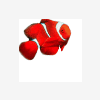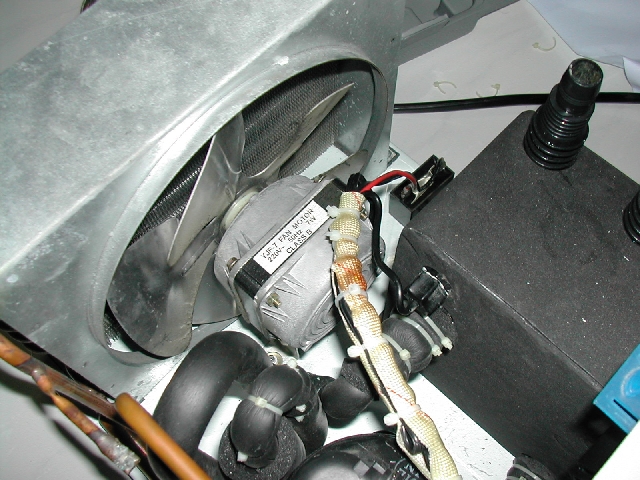-
Posts
636 -
Joined
-
Last visited
Content Type
Profiles
Forums
Gallery
Everything posted by Cedric
-
Hey, give yourself some credit, its looking good!
-
Sounds like your fan is going to KO or already has. You need to change the motor. Go to those aircon, chiller, compressor shop and buy both the motor and blades. You need to know what size is the blades. Reason you need to get a new blade is because the direction of rotation is different.
-
Give us a budget of roughly what price you are willing to fork out for your new skimmer? A good skimmer can cost upwards of $500!!!
-

Need som advice on maintaining calcum levels
Cedric replied to jquek's topic in New to the Marine Aquaria Hobby
Could be your Mg level. Check it! -
I believe you can. I simply upgrade the fan motor for my chiller from 7 watts to 16 watts for greater flow.
-

Urgent: Looking for weipro pump connectors
Cedric replied to strat's topic in Sell off/Pasar Malam Shop
Are you refering to the venturi? -
Open the rear casing and do some maintainence like vacuuming the condenser fins and check if your fan is still working.
-
Where do you stay?
-

why is nitrate level keep increasing?
Cedric replied to sunnymau's topic in New to the Marine Aquaria Hobby
I think adding an extra ph will not help reduce no3, its more commonly used against the formation of diatoms. As for the skimmer, an efficient will remove the dissolved organics/proteins before it has a chance to decompose and fuel your NO3, hence it could be a cause. As for the light, 5000-6500k is the best for macroalgae. And finally, I still think your tank is young. You have to give it time before you can see your NO3 dropping. -

why is nitrate level keep increasing?
Cedric replied to sunnymau's topic in New to the Marine Aquaria Hobby
Er . . . I do not know of any fix rule of "how fast" is fast enough. Your refugium is big, relative to your tank size. I guess if it is growing macroalgae from wall to wall, totally filled up and you need to trim regularly like once a week, that would be pretty fast. My neighbour has a 4 ft sump that is growing very well and he does have to trim very regularly so I'll take his refugium as a rough guide. As for a prizm, as long as you can get it to skim well, should be fine for your tank size, however, most people are struggling to get their prizm to perform to expectation. -

why is nitrate level keep increasing?
Cedric replied to sunnymau's topic in New to the Marine Aquaria Hobby
The size sounds good and the depth should be ok, depending on grain size. You have to give it time to mature. What skimmer are you using? -
Now it runs for about 30mins after approx an hour break. Setting at 0.5 degrees delta. I bought the motor at dunlop street, not the controller though
-

why is nitrate level keep increasing?
Cedric replied to sunnymau's topic in New to the Marine Aquaria Hobby
2 months? I suspect your dsb is not matured yet and unless your refugium is big enough and the macro algae are growing real fast, its probably not exporting nutrients fast enough. Short term solutions include: 1. Water Change 2. Use of chemicals such as AZ-NO3 3. Feed less and juice up your skimmer 4. Lower your bio-load Long term solutions 1. Wait for your dsb to mature, usually 6 months or more 2. get a denitrator 3. Upgrade skimmer Sorry but I do not recall what skimmer you are using. Is it sufficient for your bio-load? Although chasing numbers is not a good thing, it is still advisable to keep nitrates as low as possible for the long term benefits of all residents in your tank. Several reefers like myself try our very best and we can maintain nitrates at undetectable which IMO is the best. -
Hi Power Blue, the Atman noisy? Er . . . Are you sure its coming from the fan? From my observation of my own atman, there are two likely sources of noise. 1) The compressor - as its a rotary compressor, the vibration is actually greater than a normal piston compressor. Check that the three damping screws at the base of the compressor is tightly bolted. However, I believe its not the source. 2) The fan motor - the atman uses a cheap motor block of 7 watts. It is likely to die due to wear and tear of the bearings due to poor lubrication. If you want to fix this, you will need to dismantle the motor from the stand, strip the motor apart and apply grease to the bearings inside the motor. Personnally, I prefer to change out the motor block and replace it with a better quality one. I have already bought a new 16 watt motor with relacement blade for standby. Do take note that different motor turns in different direction. The orginal motor turns clockwise (when looking at the blade with the motor behind). My new motor rotates counter clockwise which is why I need to get new blades. Hope this helps.
-

Check out what ppl at RC is doing on their maxijet
Cedric replied to blueheaven's topic in DIY Forum
They are doing it to big huge eheim pumps too! -
I cannot confirm only got 2 now as I checked 3 years ago. Mine was DURA glass.
-
Yup roidan and Creetin, you are absolutely correct that tempered glass cannot be cut once tempered. If you cut it, the surface tension (in your article they use the word compression) will of the tempered glass will be compromised resulting in total complete failure of the structural integrity of the glass. Like the tempered glass on our windscreen, once a chip develops like when you hit a pebble, the surface tension is compromised and it will spread like a massive spiderweb resulting in complete failure. As for brother Hon, like what Creetin said, too bad the size for his giesemann 250W pendants is too small to find in singapore. The factories (I think got 2) in Singapore tempering glass is fed via conveyer belts into the furnace. The spacing between the chains limits the minimum size of the glass else it will fall right through.
-
Hi Roidan, Actually, from what I've gathered over the years from reefcentral and reefs.org, the point Icecap is trying to tell reefers is that any silica glass will do fine for the purpose of protecting our precious corals against uv from DE bulbs although they do not block 100%. I think the coated ones block up to 99.9%. Allow me to explain (have to go technical here to clear up the misunderstanding so please bear with me, I'll go as layman as possible): UV comes in the form of UV-a(380-315 nm) most penetrating and least harmful, UV-b(315-280 nm), and UV-c(280-10 nm). UV-c is the most harmful (same thing our UV units uses to zap the nasties) and fortunately also the most easily blocked. This is why a special material (I believe it to be quartz) must be used to allow the UV-c to pass and kill whatever we want to kill in our UV units. Glass only allow the long wavelengths through and not short wavelengths like UV-c. This is the working principal of greenhouses. See this article Most importantly, our glass, any glass, blocks 100% of UV-c and lets certain % of UV-a and UV-b passes. However in our aquarium application, the doses of UV-a and UV-b after passing the glass are not enough to have any effects on our corals for normal photo periods. Infact, there were discussions also in reefcentral on SPS reefers trying to increase the amount of UV-a and UV-b penetration to colour up their SPS. The results were however inconclusive. Yes, indeed, tempering has no effect what so ever on UV filtering, its merely for strengthening the glass against thermal stresses. Tempering is done by heating the glass to extreme temperature and rapidly cooled. This induces a internal tension as the surface chilled faster then the internals making the glass stronger. The principal is similar to pre-stressed concrete. If you are worried that normal glass will not offer you enough protection for the corals, you have two options. One, increase the thickness. The thicker the glass, the more UV it will block. Basically, if thickness 1x transmits 50% of the UV, thickness 2x will transmit 25%, 3x will transmit 12.5%, and so on. Two is of course coating it with UV protection. Note that the UV coating protects againt UV-a and UV-b. They seldom mention UV-c because its already blocked without the need of any coatings. Oh yes, you are right about museum using special museum glass to protect the paintings. Its however different becoz the pigment dyes are not capable of providing UV protection by themselves even against UV-a. Since you need to protect them for like centuries, you need to use the special glass. And mind you, it only blocks 97% of UV-a, UV-b. (And of course 100% of UV-c) To conclude, I just like to assure you our normal glass is sufficient for our coral protection. The best test if you insist is to ask Creetin after a few years for his experience with his corals.
-
Actually I beg to differ, I believe all glass will block UV. I'm using a normal tempered glass for my MH for a good 3 years. So far so good. Normal Glass IceCap's Comments I've attached two comments I've found on reefcentral which might prove useful. When I started with my own diy MH hood, my normal 3 mm glass was working fine (i.e. no corals got burnt or anything) till it shattered when I accidentally splashed water on it. In less than 2 hours my corals were literally fried and all my fishes were hiding. Since getting my tempered glass, things got back to normal. Therefore, if the glass is not providing enough sheilding, you will be able to tell easily in a matter of hours if not less. Hence I hope this will help convince some of you by my personal experience of using normal tempered glass without UV coating is sufficient.
-
No no, credit is all yours! I only pointed you in the right direction! I think you did an excellent job!
-
Should have used sumi tubing bro!
-
Very detailed very good!
-
My friend is very interested in getting both set if the price is right. Can know the price???
-
Excellent Work! More Pics Please!


